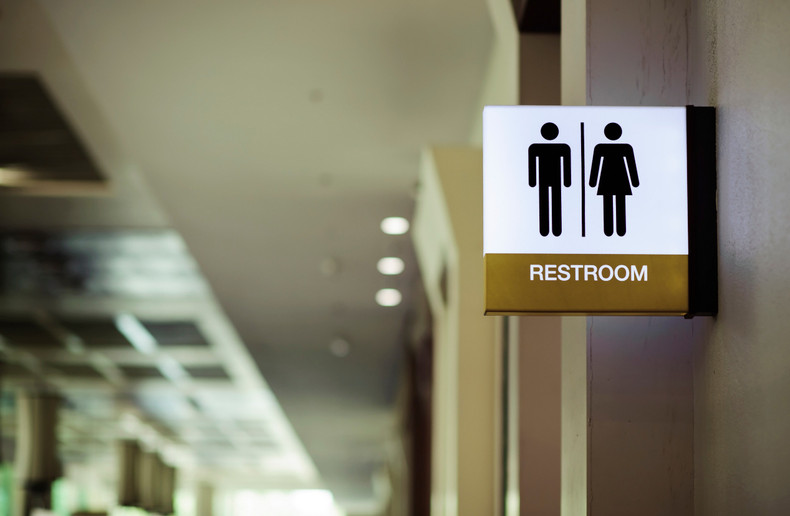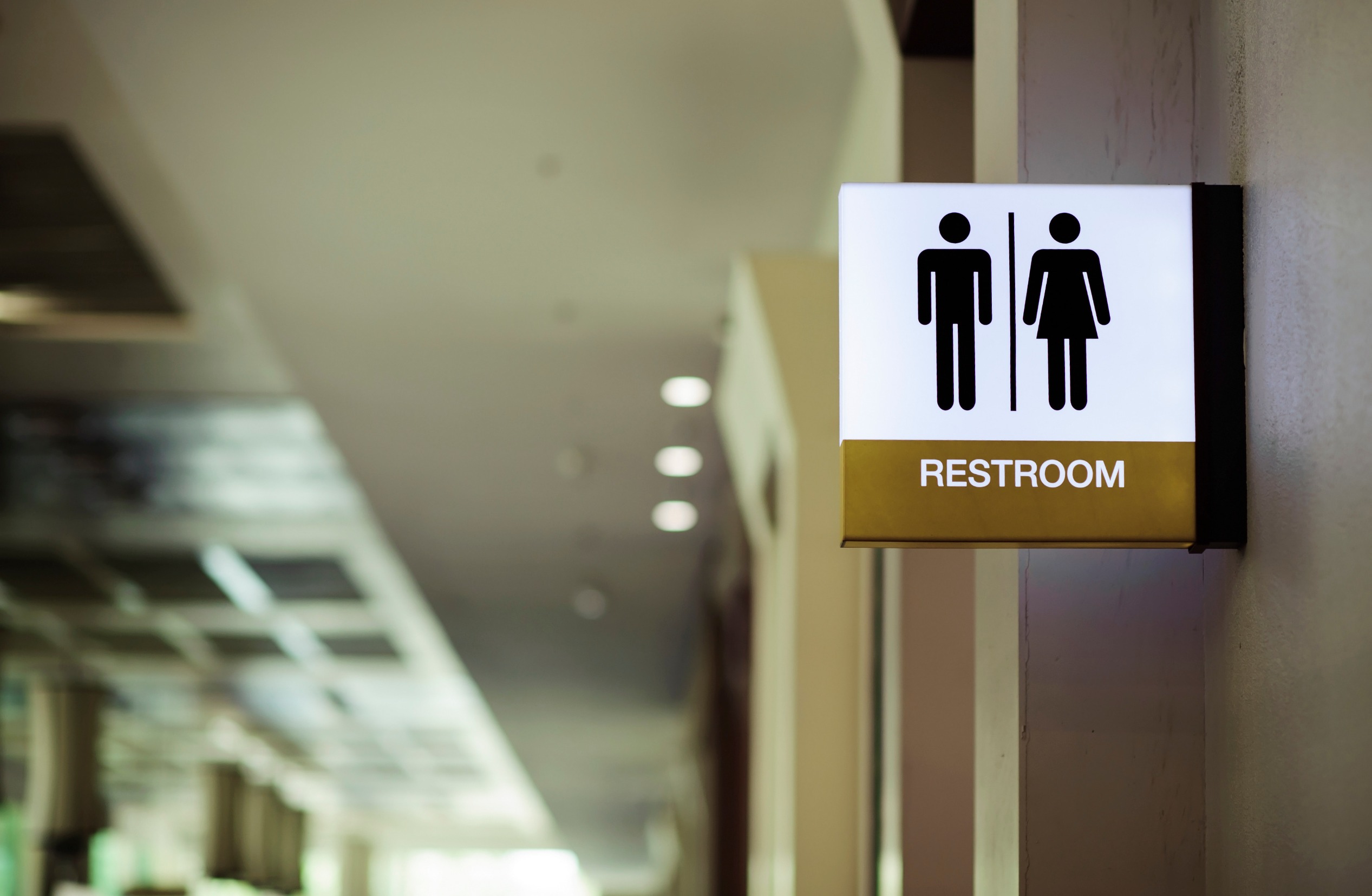
Do You Need Gender Neutral Bathroom Signs to Stay ADA Compliant?
What’s the first thing you think of when you see a ‘gender-neutral bathroom?’ Do you picture an individual who doesn’t identify with any one gender? Or do you simply picture a single-use, family-style bathroom?
Don’t worry – you’re right either way.
While most people have no problem using and sharing a bathroom with other men or women, other people might feel more comfortable in private, family-style, single occupancy restrooms – like they do at home.
In fact, that’s why so many businesses today provide gender-neutral bathrooms, as well as sex-separated bathrooms – in an effort to foster an environment that’s inclusive and accessible to anyone and everyone.
But what is a gender-neutral bathroom, exactly?
And what are they used for?
A gender-neutral bathroom is an umbrella term for any bathroom that’s designed to be used by anyone, regardless of gender – meaning it’s conveniently fitted with one lavatory, one sink, and a lockable door.
Most also include baby changing tables and feminine products.
These types of bathrooms were made popular in the early 2000s and quickly became the preferred bathroom for parents who have children (especially the opposite gender) and those who want privacy.
And while that’s still true, gender-neutral bathrooms take on even more of a meaning in the 2020s.
In recent years, gender-neutral bathrooms have become more popular among the LGBTQ community – especially among transgenders and those who identify as non-binary, gender-neutral, and/or bigender.
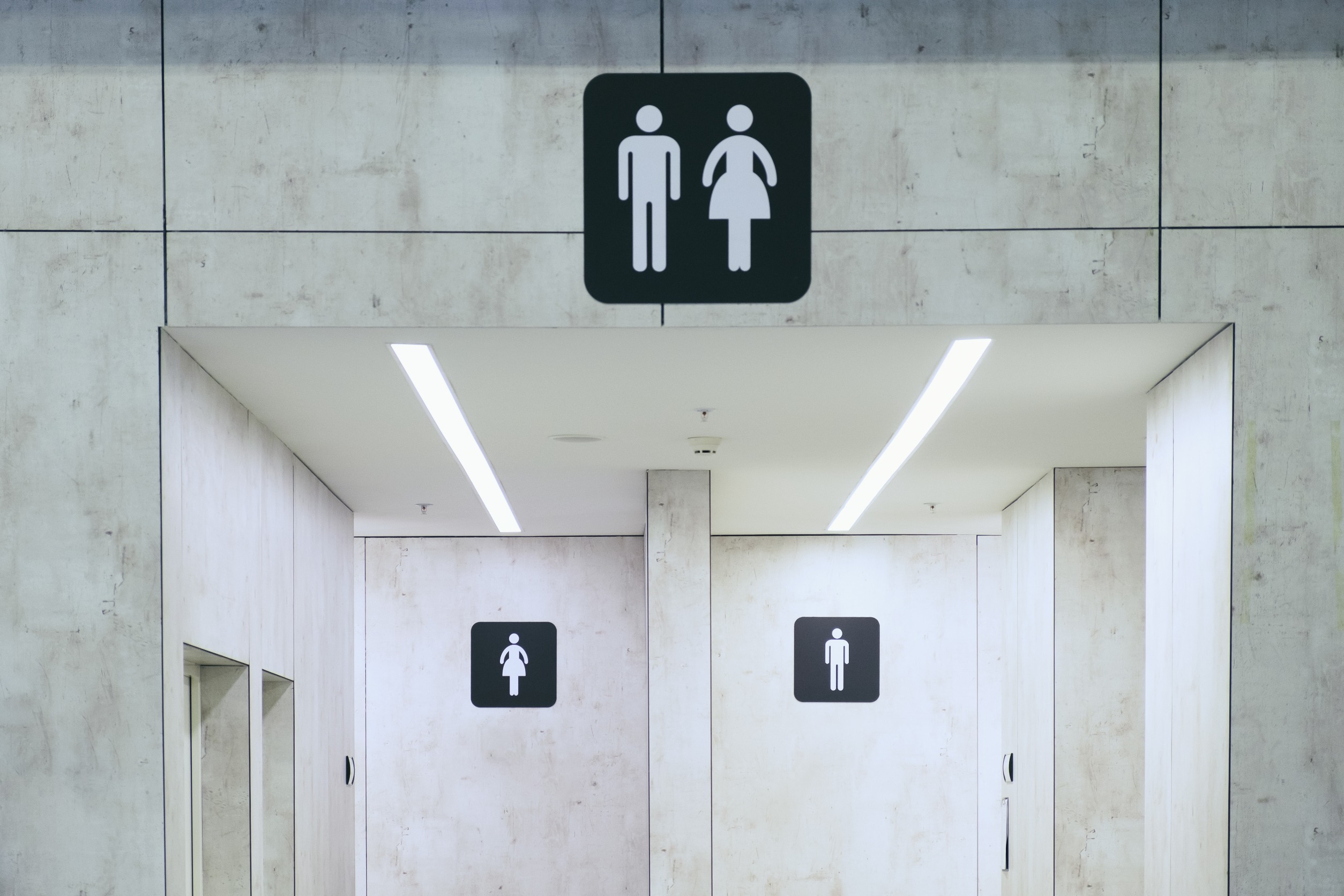
Does the ADA Require Gender-Neutral Bathrooms?
So, that brings us to the question of the hour – do you need gender-neutral bathrooms to comply with ADA standards and regulations? And if so, do those bathrooms need the proper signage to go with it?
For starters: the ADA doesn’t necessarily require businesses to have single-use bathrooms, but it does have certain standards and regulations that must be met when gender-neutral bathrooms are provided.
With that said, we highly recommend installing single-user restrooms, if possible, for a variety of reasons.
Not only do they make it easier for parents with young children, but they appeal to those who don’t identify as a male or female – ensuring everyone feels comfortable in what’s generally a vulnerable area.
And if you do install family-style restrooms in your facility, it’ll need the proper ADA signage so everyone knows what type of bathroom it is, who’s allowed in that bathroom, and what the bathroom is used for.
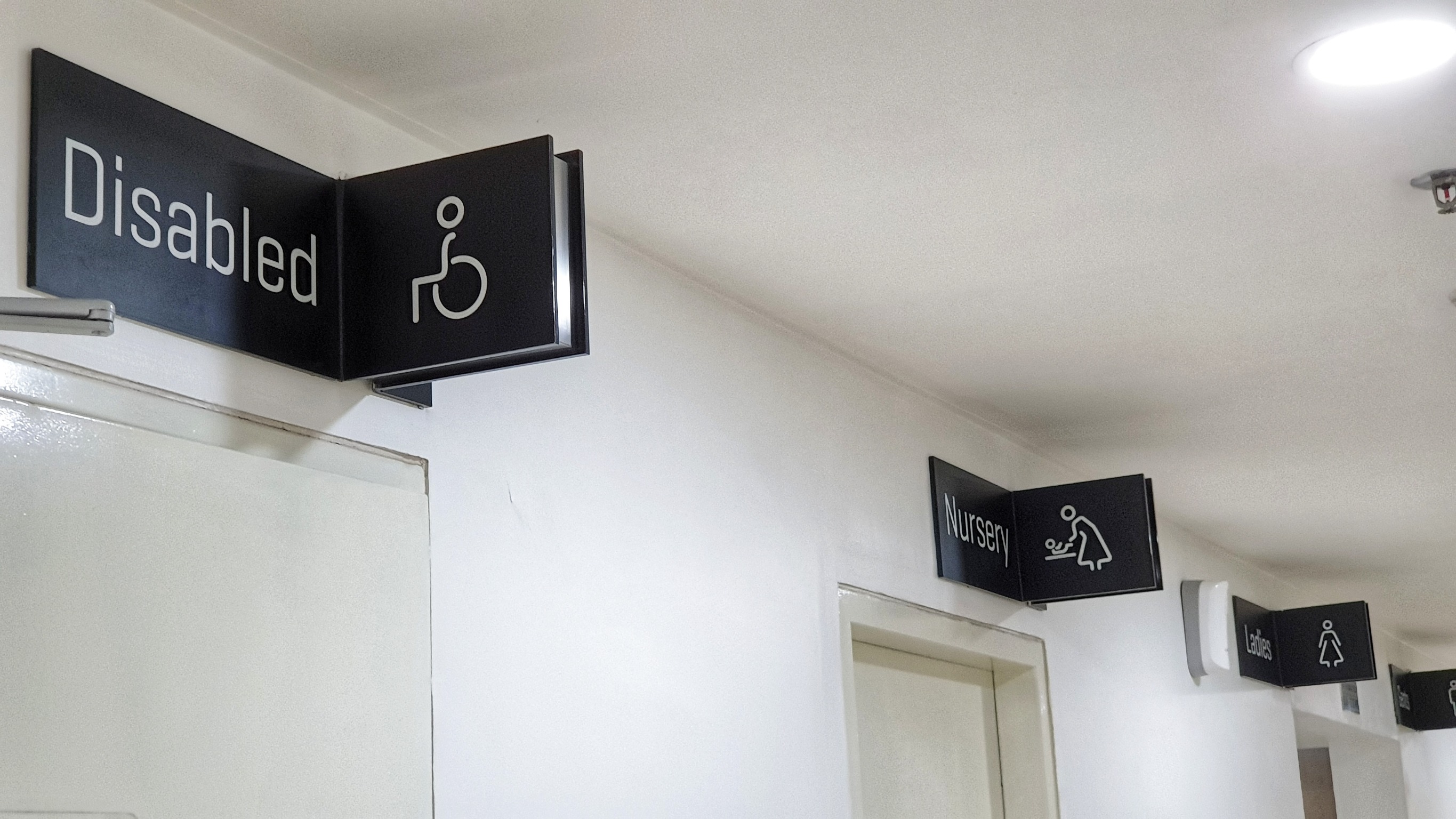
Maintaining ADA Compliance With Bathroom Signs
The Americans with Disabilities Act (ADA) is a civil rights law that was passed in 1990 (by President George H.W. Bush) to protect people with disabilities from discrimination in many areas of public life.
And one of the biggest ways it does that is with the use of ADA signage.
ADA signs come in all different shapes, sizes, and purposes. In general, they’re intended to make public spaces easier to navigate for people with disabilities, including those with visual or physical impairments.
As you can imagine, bathroom signs – including gender-neutral ones – fall in that category.
Gender neutral restroom signs are also called all-gender restroom signs, unisex restroom signs, and single occupancy restroom signs.
To ensure those signs are easy to find and easy to read, the ADA created a laundry list of standards and regulations that businesses and public spaces must follow. Here’s a quick breakdown of what to expect.
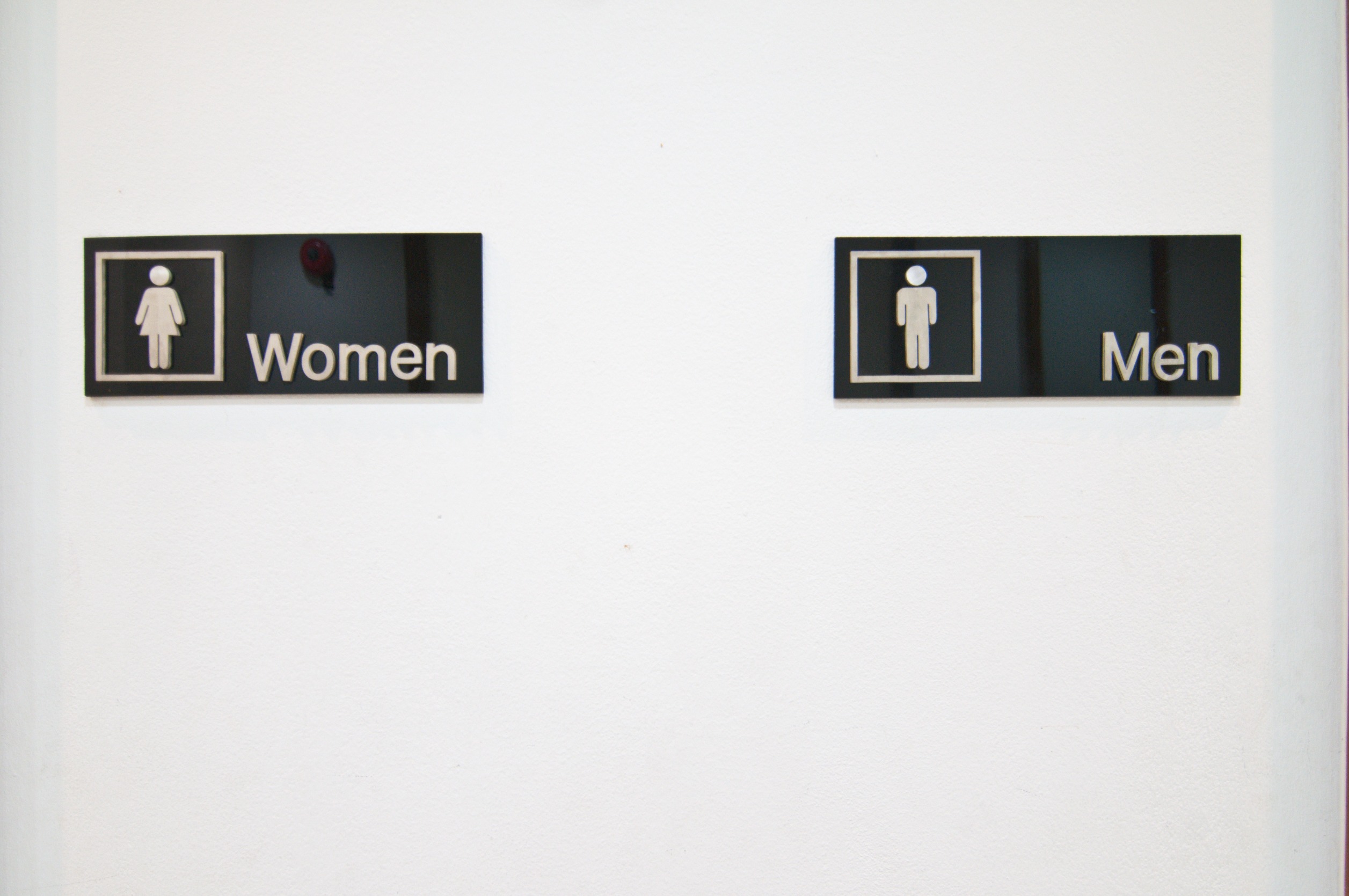
4. Raised & Braille Characters
The ADA requires that all bathroom signs be tactile signs – meaning they musthave raised characters and braille detailing who can use the bathroom (men, women, gender-neutral, and people with disabilities).
- Letters and numbers must be raised by at least 1/32 inch
- Letters and numbers must be designed in upper case
- Letters and numbers must be in sans serif or simple serif types of font
- Letters and numbers must be accompanied by Grade 2 Braille
Failing to use characters that are easy to see or feel can result in customers and employees not being able to find the right bathroom – which could result in fines, penalties, and lawsuits under the ADA.
3. Pictograms
A pictogram is a symbol or picture that represents an idea, word, or instruction. Since we’re talking about ADA restroom signs, the pictogram would be the picture of a man, woman, or wheelchair on the sign.
- Should be designed with international symbols for gender
- Accessible bathrooms should have the International Symbol of Access (ISA)
- Border dimension of pictograms should be at least 6 inches (152 mm) in height
It’s important that all pictograms are coupled with raised characters and braille letters underneath the picture – describing what that picture is for those who are visually impaired (either partially or fully blind).
2. Finish & Contrast
In order to make sure all bathroom signs are easy to see, even from a distance, the Americans with Disabilities Act has standards and regulations for the finish and contrast of the sign’s background.
- Background and characters should be matte, eggshell, or another non-glare finish
- Symbols and characters should have stark contrast to its background
- Contrast level should be around 70%
This might be an exaggerated example because no one would do this, but just imagine a black bathroom sign with black lettering or a white sign with white lettering – this is what the ADA is trying to avoid.
1. Mounting & Placement
The final rule and regulation for ADA signs is the mounting and placement of the sign – which is just as important as anything else. The correct placement, of course, is one that maximizes visibility to everyone.
- Must be mounted on the latch side of the door
- If wall space isn’t available, sign should be mounted on the nearest adjacent wall
- Must be 48″ minimum and 60″ maximum from the finished floor to the bottom line of text
- For double doors with one active leaf, sign should be placed on the inactive leaf
Keep in mind that these signs aren’t just for the eyes to see – they’re for the fingers to feel. If the sign isn’t placed correctly, blind people won’t be able to find it easily and those in a wheelchair won’t see it clearly.

ADA Central: Your One-Stop Shop For ADA Signage
Are you having a gender-neutral bathroom installed in your facility? Do you want to make sure you follow the necessary laws and regulations regarding ADA signs? Do you want to avoid fines and penalties?
If you answered ‘yes’ to any of the questions above, then you’ve come to the right place!
Welcome to ADA Central – if you have the demand, then we can assure you we have the supply!
ADA signage is one of the most important, yet undervalued aspects of any business – especially in this inclusive world we’re living in today – but we’re dedicated to making sure no one gets left behind.
To learn more about gender-neutral bathroom signs, feel free to check out our online shop and – as always – don’t hesitate to contact us with any questions you might have. We’d be honored to assist you!

